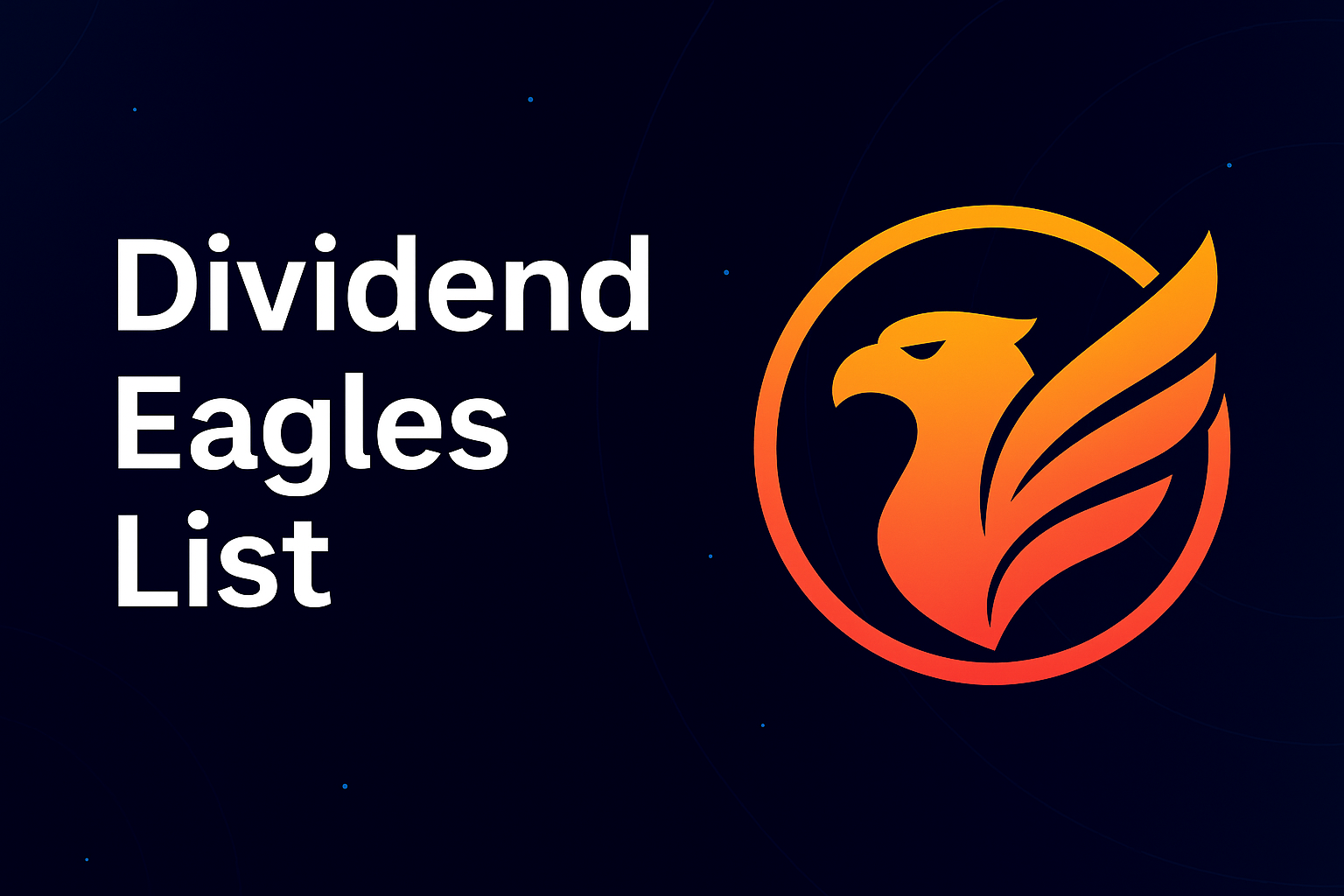Dividend investing can be a great way to build capital. Understanding how to invest in dividend stocks and funds is essential for investors seeking stable returns. Stock companies that pay dividends tend to have lower volatility. Dividend stocks or dividend funds are capable of generating income. This can serve as a good supplement to your salary or social benefits.
Below is a guide to dividend investing. You will learn about key stock metrics and potential investment strategies, as well as the risks involved and ways to mitigate them.
Table of Contents
How to Invest in Dividend Stocks and Funds: Why Choose Dividend-Paying Assets
To invest in dividend-paying stocks is considered to be less volatile. The presence of a consistent cash dividend makes the security attractive even during bearish market periods.
On average, they tend to lose less in value comparing the dividend stocks to similar stocks within the same industry but without dividends. Additionally, a consistent cash flow helps investors psychologically cope with price declines. Over a horizon of decades, such dividend stocks have historically outperformed others.
Key Indicators:
- Annual dividend yield of the company;
- Payout ratio;
- Dividend growth rates;
- The number of years the company has consecutively increased its dividends.
Who Should Invest in Dividend Stocks?
Investing in high-dividend stocks is suitable for individuals seeking passive income. This type of asset offers the following advantages:
- The company may increase its dividend payments over time;
- Dividend stocks may appreciate in value, leading to capital growth (with a successful choice of company);
- There is the possibility of taxation at reduced rates.
Dividend-paying companies are beneficial for investors looking to reduce portfolio volatility. Additionally, this cash flow can serve as an extra source of liquidity.
How dividend stocks work
Dividends are a portion of a company’s net income that it distributes to its shareholders. To receive the next dividend payment, you must own a dividend-paying stock on a specific date known as the ex-date. If you buy the stock on that date or later, you will not receive the dividend.
For example, the next time Johnson & Johnson (JNJ) will pay shareholders on March 04, 2025. The ex-date (record date) is February 18, 2025. The last day to buy is February 17, 2025.
The amount of the dividends on common stocks is determined by the Board of Directors, who rely on the company’s dividend policy. This policy outlines the rules and mechanisms for distributing net income. For preferred stocks, dividends are fixed.
Dividend stocks work in a way that shareholder rewards are not always cash dividends. There may be stock dividends or other assets. However, such options are significantly rarer.
How to Invest in Dividend Stocks and Funds: Key Differences
To invest in dividend stocks and funds has several key differences. These are presented in the table below.
| Individual dividend stocks | Exchange-traded or mutual funds | |
| Simplicity of Investment Decisions | Requires an understanding of the principles of company valuation based on multiples and others | Requires significantly less knowledge |
| Risks | High | Moderate (a dividend fund contains stocks of many companies, the bankruptcy of one of them will have a negligible effect on the share price) |
| Yield | Potentially higher (if an investor can select a leading company in the industry) | Potentially lower (a fund with a passive strategy will include underperformers) |
| Taxes | The investor chooses the timing to buy or sell particular stocks. One realizes capital gains while optimizing for taxes | Mutual funds are required to distribute capital gains annually, which can lead to additional tax liabilities |
| Commissions | The investor only pays a commission for the transaction | Funds incur management expenses |
Types of Dividend Investments
The first type of dividend stock investing is investing in individual company that pays dividends to shareholders. This option is suitable for experienced investors who want to create the most efficient portfolio of dividend stocks.
The second type involves buying shares of mutual funds or ETFs that implement a chosen dividend investing strategy. This option is suitable for beginner investors and for those who want to earn income in a more passive manner.
When selecting dividend stocks or funds (dividend stocks vs funds), it is important to consider two factors:
- knowledge of the stock market;
- the amount of free time you have to select the best dividend stocks to your portfolio.
Dividend investment strategies
There are three key strategies for dividend investment:
- The pursuit of maximum current income;
- Investing in stocks with high potential for consistent dividend growth;
- Investing in dividend stocks based on the theory of fair value.
In the first case, the key criterion for selection is a higher dividend yield. In the second one, it is the duration of growth of a dividend and the rate of increase. In the last one, investors look for stocks that are considered value stocks using traditional methods. They then choose securities with satisfactory high-yielding dividend stocks and a history of dividend payments.
Dividend Investing in Long-Term Portfolios
Dividends are one of the key factors to invest long-term. According to SPGlobal, from 1926 to 2023, they contributed 32% of the total return of the S&P 500.
Dividend reinvestment allows investors to harness the “magic” of compound interest. As a result, the investor’s capital grows at a faster rate.
Financial experts recommend that long-term investors think carefully before investing and adhere to a dividend growth strategy. A long history of stable increases in payments indicates the financial stability of the company.
Risks of Dividend Investing
Dividend stocks are subject to risks:
- Cancellation of payments. During times of economic crises, dividend payers may decide to cease regular payments on common stocks.
- Slow capital growth. Among aristocrats, there are few fast-growing businesses.
- Incorrect assessment of the issuer. A common mistake is to invest in dividend stock solely for their high current dividend yield. However, this measure can increase when the stock price decreases. Such dividend-paying stocks may lose even more value over time and generate losses.
Risks of dividend investing can be reduced by diversifying your portfolio across different industries and issuers.
How are dividend stocks taxed?
Dividends are classified into ordinary and qualified dividends. In the latter case, dividend investors pay tax at a reduced rate. To qualify for this lower tax rate, three conditions must be met:
- The shares must be issued by a U.S. corporation (or a foreign corporation but only if certain requirements are met);
- The payment must be classified as dividends (the tax benefit does not apply to income from credit unions, REITs, etc.);
- The investor must have held the stock for at least 60 days during the 121-day period. This period begins 60 days before the ex-date. For preferred stocks, the holding period is extended to 90 days.
The tax rate at which dividend stocks are taxed also depends on the investor’s income. Below is information on qualified dividends for the years 2024 and 2025.
| Tax rate 2024 | Single | Married filing jointly | Married filing separately | Head of household |
| 0% | $0 – $47,025 | $0 – $94,050 | $0 – $47,025 | $0 – $63,000 |
| 15% | $47,026 – $518,900 | $94,051 – $583,750 | $47,026 – $291,850 | $63,001 – $551,350 |
| 20% | from $518,901 | from $583,751 | from $291,851 | from $551,351 |
Non-qualified dividends are taxed at the same rates as short-term capital gains and ordinary income.
| Tax rate 2025 | Single | Married filing jointly | Married filing separately | Head of household |
| 0% | $0 – $48,350 | $0 – $96,700 | $0 – $48,350 | $0 – $64,750 |
| 15% | $48,351 – $533,400 | $96,701 – $600,050 | $48,350 – $300,000 | $64,751 – $566,700 |
| 20% | from $533,401 | from $600,051 | from $300,001 | from $566,701 |
Dividend yield and other key metrics
To invest in stocks that pay dividends, the following indicators are considered key:
- Company’s dividend yield. It is calculated by dividing the annual dividend by the current stock price. For example, on February 05, 2025, an Apple share is worth $232.8. The annual dividend is $1.00. Current yield – 0.43%.
- Dividend payout ratio. This is the portion of net income that the company directs to shareholders. The lower it is, the more likely the company will be able to maintain the dividend or even increase it.
- Consecutive years of dividend increases.
- Dividend CAGR. This is the Compound Annual Growth Rate of a dividend per share over a specific period, usually calculated for 3, 5, or 10 years.
- Total return over a period. It is calculated taking into account the dividend paid and the appreciation of the stock price.
How Dividends Work
To understand how to invest in dividend stocks, it is important to understand how dividends work. It is the board of directors that recommends the amount of dividend payment per share. The dividend process begins long before the money is credited to shareholders’ accounts. There are four key dates that are critical elements of this process.
Key dividend dates
Knowing the dividend dates enables investors to plan their purchases so that they are included in the list of eligible shareholders for the next dividend payment. They can also forecast the dividend timing, i.e., the receipt of funds in their accounts, which can be used for investing in dividend-paying stocks or other assets.
Declaration date
The declaration date is the day on which the board of directors announces the dividend amount. The dividend announcement also includes information about the payment schedule. The ex-dividend date (record date) is the most important thing to pay attention to.
Ex-dividend date
The ex-dividend date is the first trading day on which stock purchase does not entitle the buyer to the upcoming dividend eligibility. For example, if the ex-dividend date is Wednesday, August 27, then an investor will receive the dividend if they purchase the stock on August 26 or before.
On this day, the stock price usually falls by around the dividend value. This is one of the key things to understand about how to invest in high yield dividend stocks.
Furthermore, the ex-dividend date is a crucial date for calculating holding periods for dividend qualification.
Record date
The record date is the day on which the company compiles the shareholders list, thereby determining dividend eligibility. As all exchanges worldwide have adopted the same T+1 trading regime, the shareholder records coincide with the ex-dividend date. To receive the upcoming dividend payment, the stock must be purchased at least one trading day before the record date.
Payment date
The payment date is the day on which the actual dividend payout occurs. The company transfers the allocated amount for cash dividends from its account. Brokers and asset management companies then distribute these funds to their clients, allocating them in proportion to the number of shares they hold.
If the company pays stock dividends, additional shares are credited to the shareholders’ accounts.
Types of dividends
To understand how to invest in dividend stocks for passive income, it is important to know the main types of dividends:
- Cash dividends. Companies distribute a portion of their profits to shareholders in the form of cash. This is the most prevalent of dividend forms.
- Stock dividends. In this case, rather than receiving cash, investors receive additional securities. They are not subject to tax until they sell the accrued shares.
- Hybrid dividends. These are a combination of the first two types.
Dividend payments fall into two categories: regular and special dividends. Regular payments come from a company’s earnings from core operations. Special dividends are distributed when there is excess cash resulting from one-off large profits, such as from the sale of part of the company’s assets.
Guides on how to invest in dividend stocks for beginners often include information on dividend reinvestment plans (DRIPs). These are programmes offered by issuers and brokers that automatically reinvest cash dividends. Investors using DRIPs receive additional shares credited to their accounts, even if the company declares cash dividends. However, investors must pay taxes on these dividends.
How dividends affect share prices
To understand how to invest in high dividend stocks, it is important to know that dividends affect share prices in two ways.
Firstly, depending on how well the company met market expectations, the dividend announcement can lead to an increase or decrease in the stock price.
Secondly, on the ex-dividend date, there is a stock price adjustment approximately equal to the dividend amount. This becomes a natural consequence of the balance of supply and demand among traders. The less frequently a company pays dividends to shareholders, the more noticeable the gap becomes and the longer it takes to close. The size of the dip also depends on investors’ confidence in the company. Companies that show dividend growth and generate reliable income tend to have a smaller gap.
Frequency of dividend payments
The dividend frequency is determined by the company’s dividend policy. American corporations most often pay quarterly dividends. This indicates financial health and a steady stream of profits. Of the stocks listed on US stock exchanges, 76 pay monthly dividends. This is due to the specific characteristics of their business.
Some companies offer semi-annual and annual dividends. This dividend schedule is common among businesses with an unstable income.
Dividend payments for most mutual funds and ETFs occur quarterly. However, exceptions include bond funds, which usually pay monthly, and sector-specific funds, which typically pay twice or once a year.
How reinvesting dividends works
Dividend reinvestment plans (DRIPs) are implemented to automate the dividend reinvestment. Companies sometimes offer discounted prices when using such programmes.
Within DRIPs, brokers typically offer the option of making investments in assets other than the company’s shares. This makes it easier to create a diversified portfolio and maintain asset balance.
Regardless of the chosen method, choosing to reinvest dividends enhances the compounding effect of share ownership. This enables long-term investors to increase their number of shares and their future income streams.
How ETF dividends work
ETF dividends are profits generated by the fund’s underlying holdings that are distributed to investors. The management company receives dividend payments from the stocks included in the fund’s portfolio. These funds are then distributed among shareholders. Because they create a diversified portfolio, dividend-paying ETFs are considered a reliable source of income.
Dividend-paying ETFs also establish ETF ex-dividend dates, ETF record dates, and ETF payment dates. Like mutual funds and individual companies, many ETFs offer dividend reinvestment programmes.
How a dividend payout works
Regular dividend payments usually occur quarterly. However, there are companies that have monthly or annual dividend payments. Special dividends are paid after receiving one-time profits, such as from the sale of part of an asset.
Dividends from individual stocks are automatically credited to the investor’s brokerage account. The person can withdraw them or reinvest them. Mutual funds allow you to set up an automatic dividend reinvestment plan.
What are the Dividend Aristocrats?
Dividend aristocrats are companies that have increased their dividends for 25 consecutive years or more. Only members of the S&P 500 index can qualify for this designation.
There are additional requirements regarding market capitalization (minimum of $3 billion) and trading volume (minimum of $5 billion). Investors should pay attention to aristocrats if they value consistent dividends. Even during times of crisis, these companies strive to maintain their dividend payments to shareholders.
FAQ
How much to make $1,000 a month in dividends?
This depends on the dividend yield of the portfolio. At a rate of 5%, a capital of $240,000 will be required. It will generate $120,000 for the investor annually before taxes.
How do beginners invest in dividends?
Beginners are better off choosing a dividend ETF or a company from the list of aristocrats. Before buying dividend-paying stocks, it is necessary to open a brokerage account. It makes sense to turn to an online broker for this purpose, as they offer lower commissions.
How much money do I need to invest to make $500 a month in dividends?
When creating a portfolio of high-dividend stocks, you can achieve a dividend yield of 5%. This would require a capital of $120,000. If you invest in a broad market dividend ETF, you can expect a dividend yield of around 2.5%. In this case, you would need at least $200,000.
How do I start getting dividends?
In order to start receiving dividends, it is necessary to buy dividend paying stocks. To invest in dividend stock, you need to open a brokerage account.
How long do I have to hold a stock to get the dividend?
To receive dividend income, it is enough to own stocks that pay a dividend on the record date. This means you need to buy a dividend stock no later than one day before the ex-date.
Are there different kinds of high-dividend stocks?
When learning how to invest in dividend stocks and funds, investors should know that stocks are typically divided into two types. The first type includes those that have a high dividend yield. The second type consists of those that have strong potential for dividend growth.






